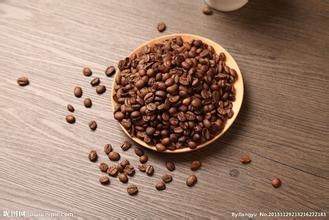Which kind of small seed seeder is good for large seeds of coffee beans?
Which kind of small seed seeder is good for large seeds of coffee beans?
Seed
Choose the coffee mother tree which is fully ripe, normal in shape, full in shape, the same size and with two seeds. To remove the peel of the selected fruit, you must be careful to prevent the seeds from being damaged and affect the germination rate, and then put the peeled seeds in a ventilated and cool place to dry. After the seed shell is whitened, the seeds can be stored, and the seeds can not be exposed to the sun. Put the seeds into bamboo baskets or cloth bags and turn them once a month in the mild sun, so that the seeds stored for a long time can maintain a high germination rate. Coffee seedlings need shade conditions, so the seedling land should be selected in shady slopes and sandy soil areas with certain shade conditions and water sources. The general method of seedling preparation is adopted to dig and loosen the soil into a seedbed and then sow seeds. According to sowing 1kg seeds, 1.5m2 seedbed is needed, and there are about 3500-4000 seeds per kilogram. If the emergence rate is more than 80%, 2500-3000 seedlings can be transferred. The seeds can be soaked in 40 ℃ warm water for 12 hours before sowing, and the effect is the best. [5]
Cuttage
Cutting materials with straight branches, can not use a branch, because a branch cuttings after the new plant can only grow creeping, can not grow into a straight coffee tree. Cuttings should be cut with green uncorked, fully aged leaves, robust straight terminal buds at the bottom of paragraphs 2-3, not semi-corked and corked straight branches. The leaves of cuttings are four inches wide (about 6-8 cm), and each section of cuttings is 4-6 cm long. The cuttings are cut into two pieces, each with a blade, and the cut is oblique and smooth.
The slotting machine generally uses a sand bed with a thickness of 40-50 cm, with coarse sand in the lower part and medium fine sand in the upper part. The shade degree of the slotting bed should be 80-90%. Wash the sand first when using it, or you can mix it with the coconut bran of 1 stroke 2. Using spray equipment, the rooting rate of cuttings is high, but the cost of equipment purchase is high.
The cuttings can be cut obliquely or directly, and the cutting depth is buried at the leaf node. 10-15 cm in a row, with the leaves not covering each other as the standard. Fully sprinkle with water after insertion to make the cuttings in close contact with the sand. After cutting, plastic film should be covered on the cutting bed to reduce water evaporation and improve the rooting rate of cuttings. When covering the plastic film, it should be arched with iron wire or bamboo, inserted on the edge of the sand bed, and then covered with the plastic film, and then pressed to maintain the humidity in the bed. If you use spray equipment, you don't have to cover plastic film.
Evergreen trees. The plant is tall, more than 10 meters high, the branches are thick and hard, grow obliquely upward, and the branches cork the fastest. The leaf blade is oval or round, the leathery leaf surface is glossy, the leaf end is closed, and the leaf margin is not corrugated. The fruit is large, oblong, the skin and pulp are hard and thick, the navel is large and protruding. The ratio of fresh fruit to dried bean is about 7: 10. The seed shell is thick, hard and tough, the seed coat is close to the seed kernel, the bean grain is large, and there are about 1300 beans per jin. The ripe fruit is scarlet. The branches bear less fruit, and the number of fruits per node is about 5-6. The main root of this species is deep, drought-resistant, wind-resistant, cold-resistant, light-resistant, and most susceptible to rust. The yield per plant is high and the yield per unit area is low. Strong flavor and strong irritation.
The main varieties are Esselsa (also called Charley), which was introduced from Guangxi to Hainan in the 1970s. The fruit is vigorous, but the seed coat is thick and hard like a small seed, the ratio of fresh to dry is 5: 8, and the quality is strong and slightly bitter. Deep roots, strong drought and cold tolerance, resistance to leaf rust and longicorn beetles
For the same kind of coffee, the bigger the bean, the higher the grade, the smaller the bean, the lower the grade, and the cheaper it is. Of course, there are differences in taste. The bigger the beans, the stronger the coffee. However, in addition to high-grade products, the classification of other coffee is not very strict, for example, the central grade beans can account for 60%. Then beans one level higher than this level and beans at a lower level will each account for 20% at the same time. Therefore, sometimes it is roasted according to the standard of the marked central grade, and the other 40% of the coffee cannot be roasted under the best conditions.

Important Notice :
前街咖啡 FrontStreet Coffee has moved to new addredd:
FrontStreet Coffee Address: 315,Donghua East Road,GuangZhou
Tel:020 38364473
- Prev

Can I keep the coffee and cooked beans in the refrigerator?
Can I keep the coffee and cooked beans in the refrigerator? The acidity is sharp and bright 2. The bright aroma of acidity increases by 3. The acidity softens, the aroma and sweetness increases by 4. All kinds of flavors tend to be balanced. The sour taste and aroma weakens and the miscellaneous smell begins to appear 6. The stale defective flavor is obvious (beyond the best flavor period). The speed of this process varies depending on the preservation and baking depth of cooked beans, in addition
- Next

Introduction to the description of extraction time, roasting degree and flavor of hand-brewed coffee
Coffee bean blending formula, hand-brewed coffee extraction time, roasting degree flavor description introduction; blending coffee requires expert ability to understand the taste characteristics of each kind of coffee, know what the taste of the kind of coffee you want to mix is like, know how to achieve that taste, but in any case, you can not regard the coffee as an advanced form of coffee.
Related
- Guji coffee producing area of Guji, Ethiopia: Humbela, Shakiso, Wulaga
- What is the most expensive variety of Qiloso in BOP multi-variety group?
- How to store the coffee beans bought home?
- Why are Yemeni coffee beans so rare now?
- Ethiopian Sidamo all Red Fruit Sun Sun Santa Vini Coffee beans
- SOE is mostly sour? What does it mean? Is it a single bean? what's the difference between it and Italian blending?
- Is Italian coffee beans suitable for making hand-brewed coffee?
- How to choose coffee beans when making cold coffee? What kind of coffee beans are suitable for making cold coffee?
- Just entered the pit to make coffee, what kind of coffee beans should be chosen?
- Can only Japan buy real Blue Mountain Coffee? What are authentic Jamaican Blue Mountain coffee beans?

